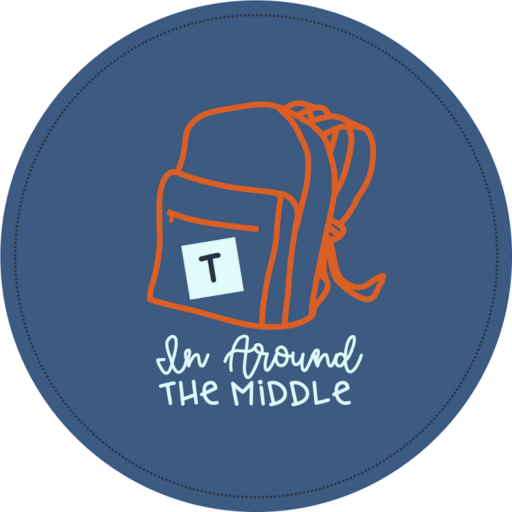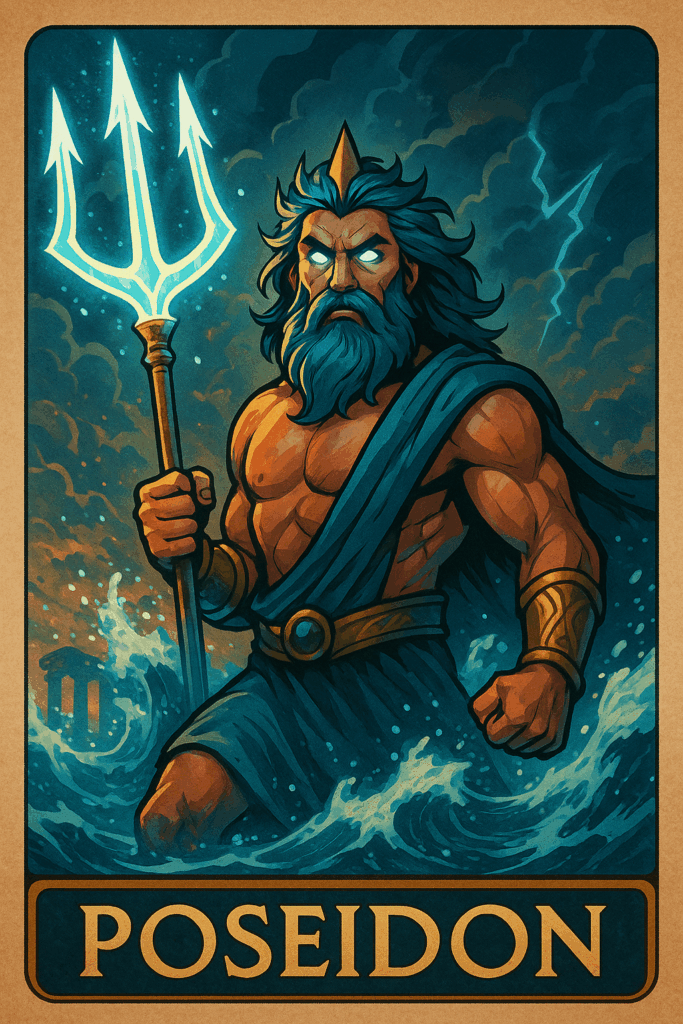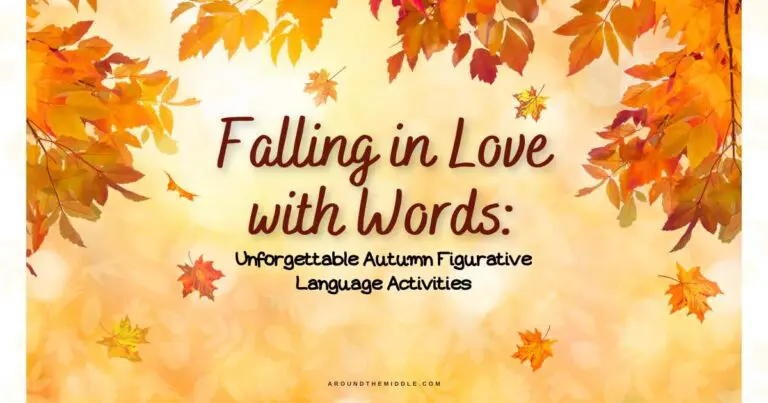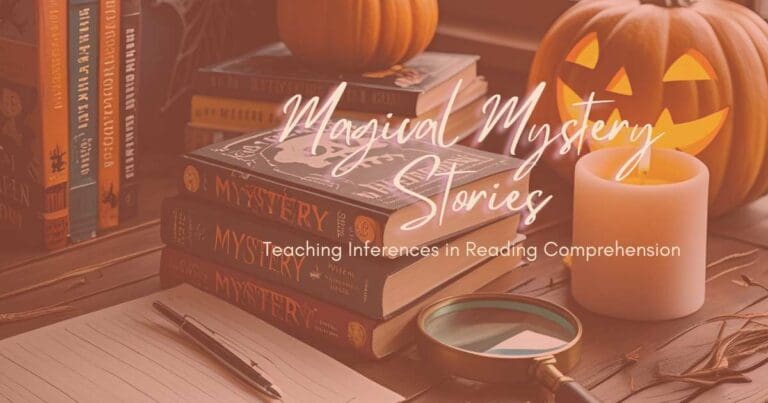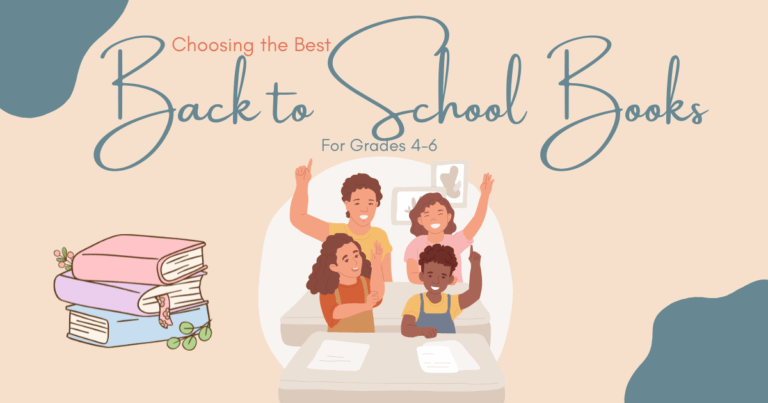Finally Love Novel Studies: Expert Tips for Differentiating Your Novel Study Approach even with Split Year Levels
Let’s face it, today’s classrooms are more diverse than ever—especially in upper elementary. Whether you’re teaching a split grade like me, or a straight year level, you’re likely juggling a wide range of reading abilities, learning needs, and engagement levels. Add in fewer support staff and the pressure to keep everyone moving forward, and it’s easy to feel like your novel study is destined to fall flat—or leave some students behind.
But it doesn’t have to be that way. With the right mix of structure, flexibility, and creative planning, you can run a novel study that’s accessible, rigorous, and enjoyable for all learners. Here’s how to make it work (without losing your mind).
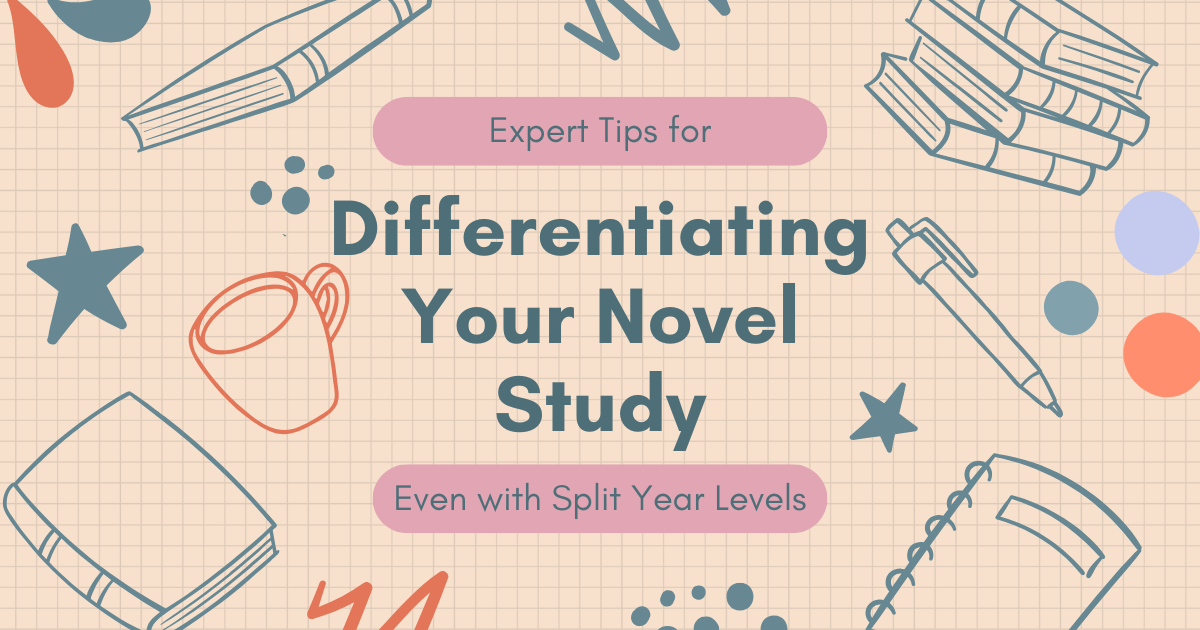
1. Start With a Read Aloud
I always read class novels out loud. Reading the novel aloud levels the playing field right away. It removes decoding barriers and brings all students, regardless of reading ability, into the story together. Bonus: A good read-aloud builds classroom community and keeps the pace steady. I leave it up to my students if they want to follow along or just listen.
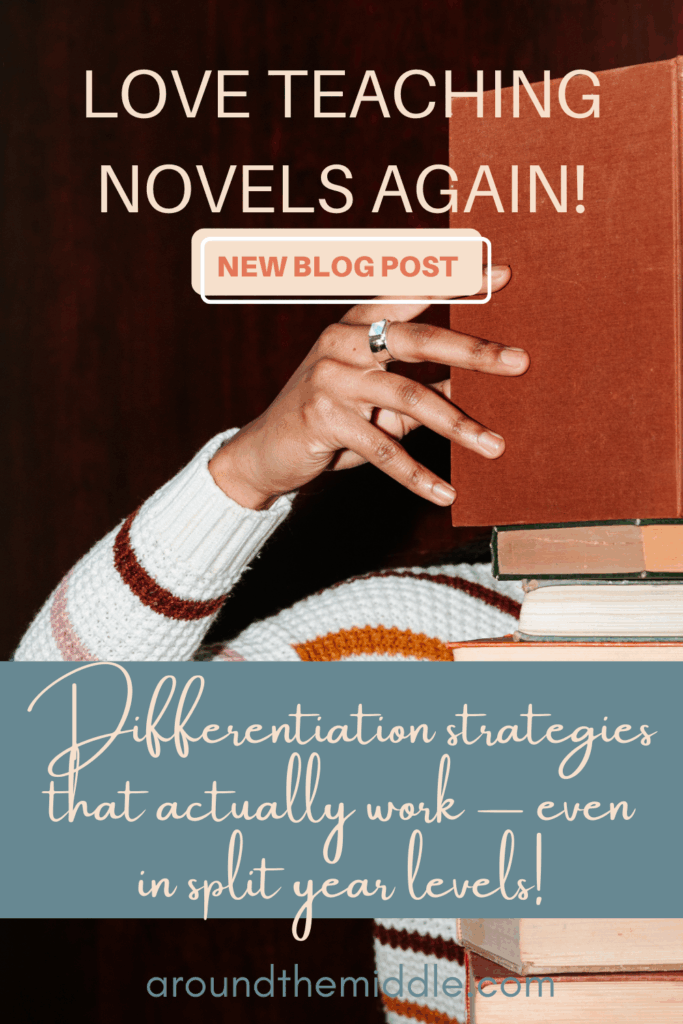
Tips:
- Choose a novel with strong characters and universal themes (think The Wild Robot, Fish in a Tree, Holes, Ghost).
- Use expression, pacing, and pauses to model fluency.
- Invite predictions, questions, or reactions as you read.
- Encourage students to follow along in their own copies but leave it up to them, everyone absorbs the story best in their own way.
2. Launch With Pre-Novel Activities That Build Context
Before students even meet the characters, help them build the background knowledge they need to access the story.
Ideas to try:
- A quick research task on the novel’s setting or time period
- A KWL chart about a central theme (e.g., survival, identity, justice)
- A class discussion or journal prompt to spark curiosity
- Debatable statements related to the novel’s theme (e.g., “Breaking the rules is sometimes the right thing to do”) with space for discussion and reflection

This kind of low-floor, high-ceiling activity invites all students to contribute, regardless of reading level. Personally, in my classroom, I like to alternate between pre-reading scavenger hunts and debatable statements depending on the novel.

For example, if we’re reading Wonder by R.J. Palcio then I will launch with a pre-reading scavenger hunt where students learn about Treacher Collins Syndrome and do the debatable statements early in the novel and at the end. Whereas for a novel like Refugee by Alan Gratz I want to dive deep into the themes and global responsibilities so start with the debatable statements and carry this through during and after.
3. Differentiating your novel study by Scaffolding Comprehension With Full-Sentence Answers
If you’re tired of getting one-word answers or blank stares when you ask a comprehension question, it might be time for some explicit instruction.
Strategy: Teach students how to turn questions into full-sentence answers—and back them up with text evidence.
Example:
- Q: Why did Roz climb the cliff?
- Entry-level answer: Roz climbed the cliff because she was looking for a safe place to stay.
- Growth-level answer: Roz climbed the cliff because she believed it would help her find a better view of the island and locate safety. The text says, “She scanned the horizon, hoping to spot a quiet, hidden place to make her home.”
Add structure with:
- Sentence starters and anchor charts
- A class acronym like RACE or RAP to guide responses
- Differentiated questions (some literal, some inferential, some opinion-based)
This type of task is open-ended enough to allow for growth and stretch without leaving anyone behind.
4. Bring in Figurative Language Early (And Make It Fun)
Figurative language is one of those elements that gives even struggling readers a way to shine. It’s visual, creative, and often funny or surprising.
Start with a quick intro or refresher: similes, metaphors, personification, hyperbole. Use mentor examples from the novel if possible.
Try this:
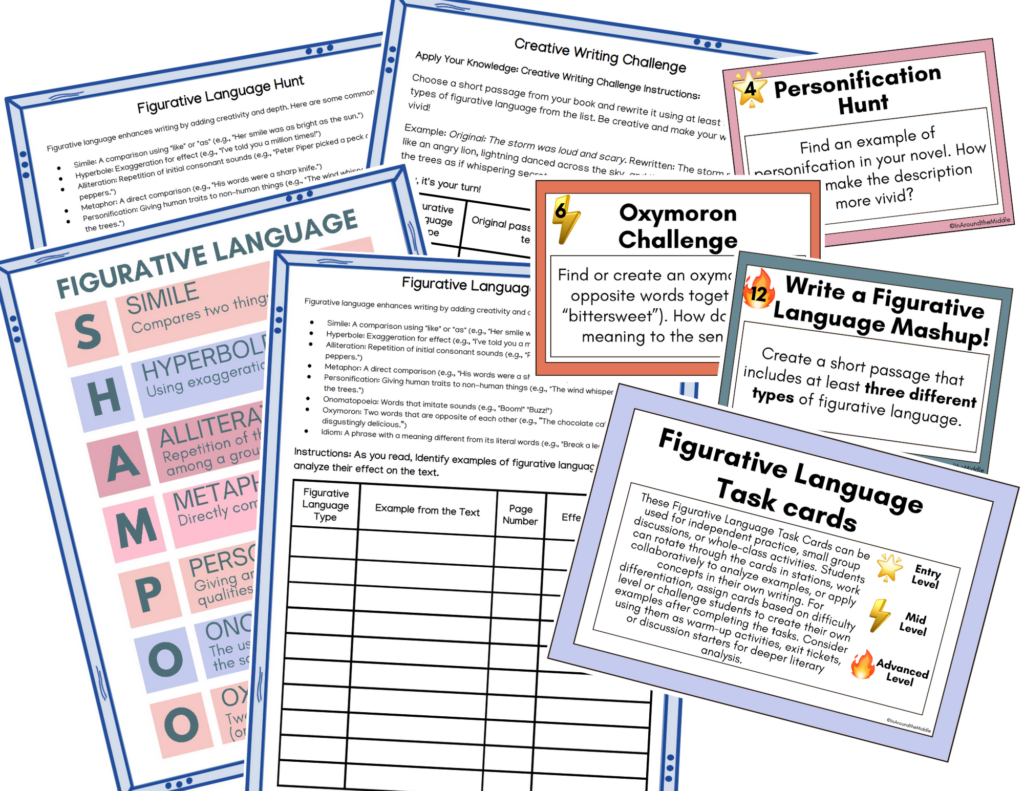
- Give students a printable or digital figurative language tracker (grab a freebie!)
- Play a match-up game with terms and examples
- Let students illustrate or act out their favourite figurative lines
- Point out great examples as you read
- Have students put their hands up when they hear an example in the novel as you read.
5. Get Them Talking With Hexagonal Thinking
Small group work doesn’t have to mean chaos. One of the most effective ways to boost discussion, especially with mixed-ability students, is through hexagonal thinking.
Each student or group receives hexagons with key words or concepts from the novel—characters, themes, quotes, events—and they connect them based on relationships.
During reading:
- Use hexes to explore character motives, conflicts, or changing relationships
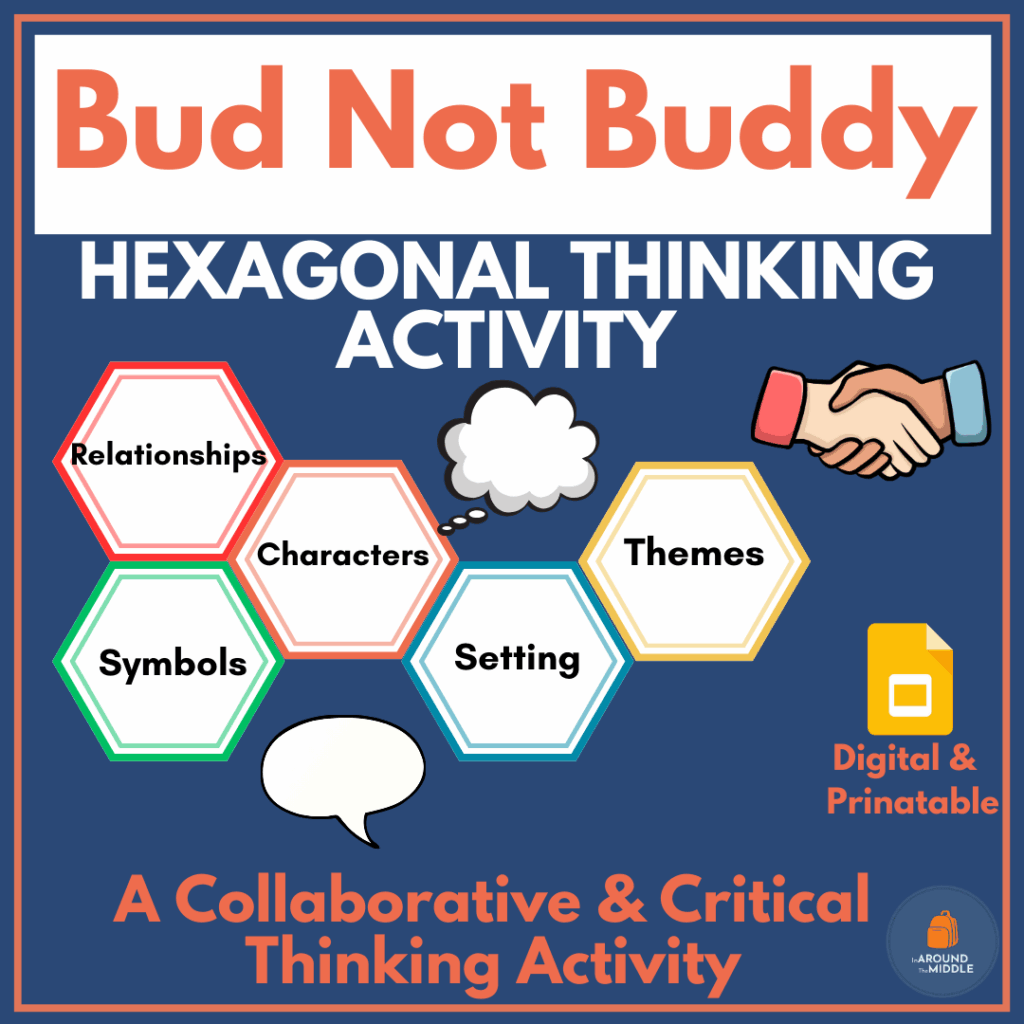
After reading:
- Students justify their connections in writing or presentations
- Class gallery walk to compare connections
Want to make your own hexagons? Check out my blog post on making your own hexagonal thinking template or save time by grabbing ready-to-use, novel-specific sets from my TpT store.
6. Differentiating your novel study through Challenge and Engagement With an Escape Room
End-of-unit fatigue? Inject energy and collaboration with a low-prep escape room based on the novel.
What to include:

- Puzzle tasks tied to story events, characters, or vocabulary
- Challenges that require teamwork and critical thinking
- Figurative language or comprehension clues built into each stage
Keep the tone light and let students feel successful—this is where the reading journey comes full circle.
No time to make your own? I’ve got no-prep (no shapes to cut or envelopes to stuff I promise), novel-specific escape rooms in my store ready to go.
7. Keep Figurative Language Going With a Scavenger Hunt
Now that students have practiced identifying figurative language throughout the novel, it’s time to turn up the fun. Set up a figurative language scavenger hunt.
Versions to try:
- Individual task: underline examples directly in the text
- Partner task: complete a printable sheet with example, type, and effect
- Creative option: write their own examples using the novel’s tone or style
Use the examples students found during the novel to create your own scavenger hunt—or grab a ready-made gamified learning version from my store.
8. Mix and Match With Flexible Tasks
To truly differentiate, have a few go-to choice-based or open-ended tasks ready:
- Reading response menus
- Character “Instagram profiles” or journals
- Compare-and-contrast Venn diagrams for character growth
- Create a theme collage using images or quotes
Looking to boost engagement even more? Try my free AI prompt resource for creating:
- Movie posters
- Character trading cards
- Action figure boxes
It’s a creative, student-led way to tap into your class’s strengths while reinforcing comprehension. Check out the blog post on how to do it.
Final Thoughts on differentiating your novel study
Differentiating your novel study doesn’t mean creating 10 different versions of every task. It’s about designing open-ended, flexible reading activities that allow all students—from reluctant readers to gifted writers—to access the story, engage in discussion, and grow as learners.
Start with one or two strategies that suit your teaching style and expand from there. You’ve got this.
P.S. Need a free figurative language tracker or want to try a ready made pre-reading debate PowerPoint and activities? Check out the resources linked above!
Happy teaching
